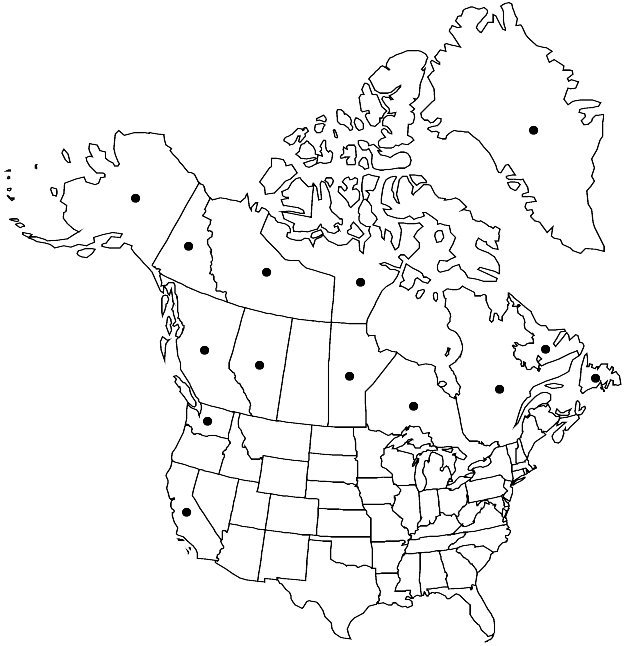Tayloria lingulata
Musc. Scand., 19. 1879.
Plants 3–4 cm, in loose tufts, brown proximally, green distally. Stems sometimes branched. Leaves moderately crowded, somewhat contorted when dry, lingulate, 2–4 × 1–1.4 mm; margins plane or recurved proximally, entire or nearly so, sometimes with blunt teeth; apex obtuse to rounded; costa ending before apex. Specialized asexual reproduction absent. Sexual condition autoicous, sometimes apparently dioicous. Seta bright red, 1.5–4 cm, flexuose, slender. Capsule ± ovoid, 1.5–2.5 mm including hypophysis; hypophysis concolorous or slightly darker than urn, as long as urn; columella included; operculum deciduous, convex, nearly flat when dry, apex bluntly and obliquely umbonate to short-rostrate; peristome inserted somewhat below mouth, prostome present as small, brownish, papillose fragments; exostome teeth 16, not split, erect when dry, deep yellow or orange-yellow, broadly lanceolate. Spores 26–45 µm, smooth.
Phenology: Capsules mature summer.
Habitat: Damp soil, humus, mud rich in organic matter such as insect exuviae or bird droppings
Elevation: low to high elevations
Distribution

Greenland, Alta., B.C., Man., Nfld. and Labr., N.W.T., Nunavut, Ont., Que., Yukon, Alaska, Calif., Wash., n, c Europe, Asia, Atlantic Islands (Iceland)
Discussion
Tayloria lingulata is distinguished by its tongue-shaped leaves. Also, the setae are relatively slender. The 16 exostome teeth are separate and erect, and the short, broad urn is about as long as the hypophysis.
Selected References
None.